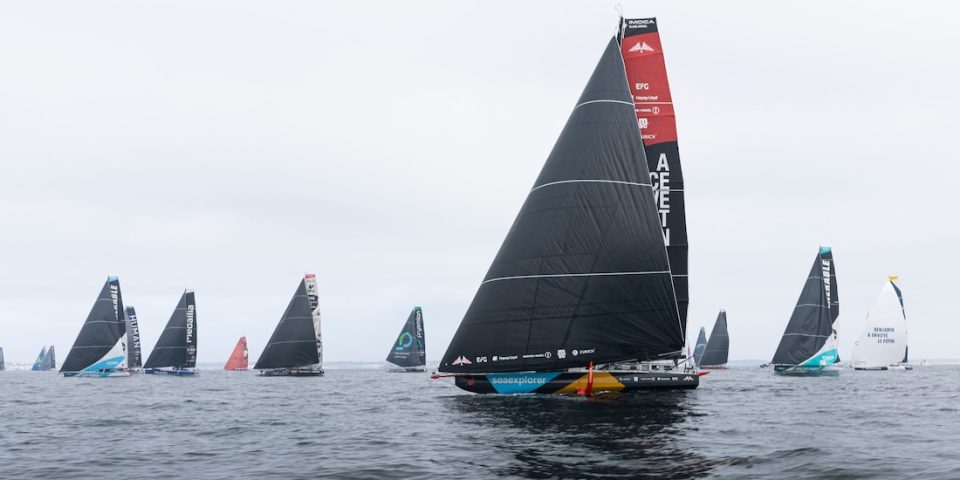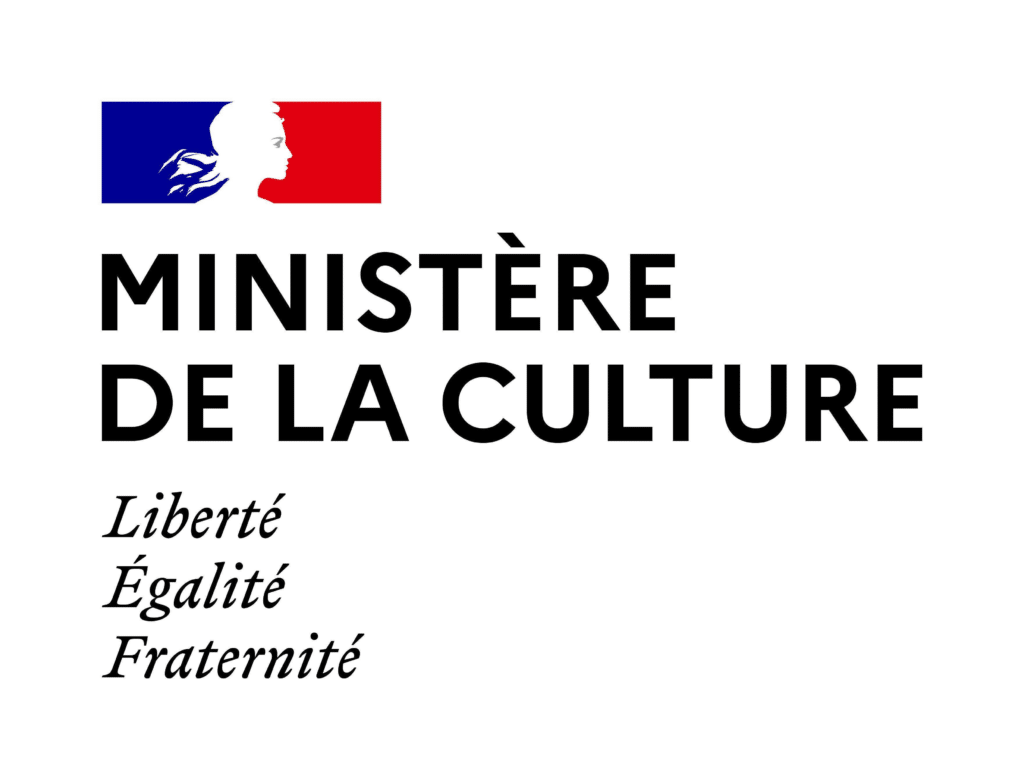Four years after a ‘irst edition contested in complex sanitary conditions, The Ocean Race Europe sets off from Germany on 10 August, with the ambition of establishing itself as a permanent fixture on the Imoca calendar, despite the seven boats taking part falling a little short of expectations.
Kiel, Portsmouth, Porto, Cartagena, Nice, Genoa, finishing in Montenegro… that’s the programme that awaits the seven crews crews taking part in The Ocean Race Europe for a month and a half from August 10. It’s a major challenge for the sailors, who will have to deal with varied coastlines and conditions, but also for the organisers, who are hoping to see the event grow in stature, four years after the first edition was marked by the Covid-19 crisis.
“In 2021, two weeks before the start, we didn’t even know if we were going to be able to race. It was very difficult to sell the concept to cities with so many unknowns,” recalls Johan Salén, event director. But in the end, everyone was happy, and it strengthened our belief that we had to resurrect this tour of Europe, which had been a success before coming to a halt in 1999.”
Ambitions have been revised upwards for the second edition, with a more extensive route, despite some difficulties in finding host cities. “Some of them came very quickly, while for others we had to work a little harder, because in summer the schedule is already very full. Paradoxically, it’s in France that we’ve had the most difficulty,” continues Johan Salén, who explains these difficulties by “competition from the large number of nautical events that already exist.
“Between 100,000 and 200,000
people per stopover”
The Ocean Race has not hesitated to invest heavily in order to attract these local authorities – whose financial contribution remains confidential but “really varies greatly depending on the commitments, there is no single rate”, he explains – with an organisation team that has grown from 20 to almost 60 people in the last three months. The range of services on offer to the public has also been expanded with the launch of the Ocean Live Park, featuring a 14 metre radius dome for entertainment and video broadcasts, as well as VIP experiences reminiscent of events on the SailGP circuit. “We’re hoping to get between 100,000 and 200,000 people per stopover,” comments the organiser.
Media coverage has also been stepped up, thanks to new mapping and a partnership with Warner Bros. Discovery (owner of Eurosport, among others), which will provide live coverage of the start and the final coastal race, and will produce 14 programmes during the event. “Strategically, we want to have a good edition, so we’ve made major investments that will serve us well for The Ocean Race Atlantic (in 2026) and The Ocean Race (2027). We’re not going to make any money, but we want to prove that it’s a model that works,” explains Johan Salén, who does not wish to reveal the overall budget for the event.
As for the line-up, although more than a dozen teams had expressed an interest, in the end only seven will set off from Kiel on August 10. “In an ideal world, we’d have liked two or three more teams“, admits the latter, citing “the unfavourable economic climate”, before explaining, with regard to the budget required to take part: “For a team that already has the boat, the extra cost is around 250,000 to 300,000 euros. If you don’t have anything, we’re talking more like a million, or even 1.5 million. A German team, for example, stumbled over a financial issue. As for the existing Imoca projects, they often had contracts up to the end of 2025, drawn up four years ago and not including the round Europe race. It’s not the best time to ask for a budget extension. We hope that in four years’ time, The Ocean Race Europe will be more established in their calendar. But the quality of the teams is as important as the quantity, and in that respect, we’re more than satisfied.”
“I could really see
the potential for my sponsor”
This observation is shared by the participants, starting with Yoann Richomme’s Paprec Arkéa team, this latter winner four years ago in the VOR 65 under the colours of Mirpuri Foundation Racing. “The decision to do The Ocean Race Europe was taken just over two years ago,” explains team manager Romain Ménard. After a programme that was very much focused on solo sailing, we were keen to get involved in this collective dynamic, with the transmission aspect that is so important to Yoann.” The project also convinced the partners, in particular Paprec, whose Spanish subsidiary accounts for 10% of the group’s turnover. “It’s not easy to get the subsidiaries to come to us, so it’s invaluable to be able to go to the subsidiaries,” confirms Romain Ménard, while numerous partner activities are planned along the route.
But that doesn’t mean the budget has to go up. “We’ve been extremely vigilant about this, and that’s also why we’ve chosen people from the team to sail, in addition to Pascal Bidégorry and Mariana Lobato. It’s a way of rewarding those who have put in a lot of hard work, but also of limiting costs. At the end of the day, it’s really on the fringes of a four-year Imoca budget, with the promise of a great battle on the water, in particular with Holcim-PRB, Canada Ocean Racing, but also our sistership, Mapei“.
A newcomer to the circuit, the Italian Ambrogio Beccaria, who has teamed up with Thomas Ruyant Racing (who has just sold the boat to Mapei), immediately suggested The Ocean Race Europe to his title sponsor. “I did a leg of The Ocean Race in 2023, and I thought the race was incredible, with crazy crowds in The Hague and Genoa. It was very different from the classic events we have in France, and I could really see the potential for my sponsor,” explains the sailor from Milan. “If I’d been on my own, I wouldn’t have been able to put this together, so we’re capitalising on TRR’s experience.”
Roura at the last minute
This support has also made it possible to recover the mast of the Lorient-based team’s second boat, following the major damage suffered by the crew on the recent Course des Caps. For Ambrogro Beccaria, who has not included The Ocean Race 2027 in his programme, this first race under the colours of his new sponsor “allows you to gain experience”, adding, with regard to the competition: “On this course, everything is open. Don’t forget that it‘s a daggerboard boat that won four years ago (Offshore Team Germany, editor’s note)!
Alan Roura, who entered the race at the last minute, is banking on this unpredictability to get the best out of it, as he is accompanied by a new Saudi sponsor, Aamala, already a partner of The Ocean Race and the finishing city of the next edition of the round the world race. “They wanted a boat, and we had a turnkey project to offer them. With such a tight schedule, not many people could say the same. We may not win a lot of races at sea, but on land, we win a lot!” smiles the Swiss skipper.
With a budget “equivalent to that of a year’s Transat Café L’Or”, the sailor with three Vendée Globes has put together “an atypical team, with a variety of profiles, following a call for candidates in Switzerland. We’re young, we’re breaking the mould, but in this format, I think we’ve got something to play for.” For him, the idea is to transform the trial with a view to The Ocean Race 2027. “Today, the crewed round the world race is our priority, the Vendée Globe is just an option.” No doubt a good result around Europe will be an asset in convincing his partner to continue the adventure.
Photo : Mark Lloyd / Alea






